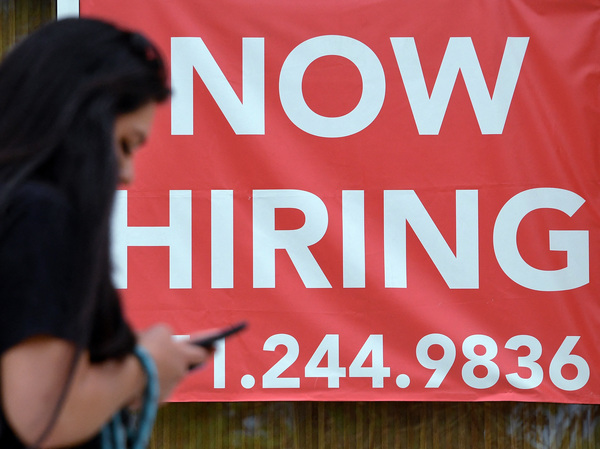Hiring slows sharply, and it's raising new concerns about the economy

Updated: 7:53 a.m.
A few months ago, forecasters thought September would be a banner month for hiring.
Schools would reopen, freeing parents to go back to work. Supplemental unemployment benefits that some employers blamed for keeping workers on the sidelines would expire. Most importantly, widespread vaccinations would put the pandemic in the rearview mirror.
It hasn't exactly worked out that way.
Employers added just 194,000 jobs in September, according to a monthly snapshot from the Labor Department. That's even worse than the anemic job gains in August and far below the pace of hiring earlier in the summer, when employers were adding around a million jobs a month.
Create a More Connected Minnesota
MPR News is your trusted resource for the news you need. With your support, MPR News brings accessible, courageous journalism and authentic conversation to everyone - free of paywalls and barriers. Your gift makes a difference.
"It's just a bumpy recovery," says Nela Richardson, chief economist at the payroll processing firm ADP. "And it's a recovery that's still linked to the pandemic and the Delta variant."
A surge of new coronavirus cases slammed the brakes on hiring in August, when employers added just 366,000 jobs. Restaurants and retail shops actually cut workers that month, as fear of the virus discouraged customers from eating out and shopping.
Still there's some room for hope.
Since August, the health outlook has improved. New infections, hospitalizations, and deaths have all fallen in recent weeks.
Bars and restaurants added 29,000 jobs in September.
The unemployment rate dipped to 4.8 percent in September, from 5.2 percent in August, partly because some people dropped out of the workforce.
Employers hope that the end of the emergency pandemic programs nationwide in early September will spur more people to return to work.
More than 7 million people dropped off the unemployment rolls last month and there have been early signs that some of them are going back to work.
"We saw it," says Mike Parra, Americas region CEO for the delivery company DHL Express. "The moment [benefits] stopped in Ohio and in Kentucky, we saw a mad dash into the buildings."
Parra has been trying since June to staff up for the busy holiday season.
"It's not been easy," he says. "It's definitely been different than in the past as a result of, first and foremost, the pandemic in itself."

Schools reopen and that may be good for employers
The jobs report shows local school districts cut 144,000 jobs in September, but that may be misleading. The Labor Department typically adjusts hiring figures to discount seasonal hiring patterns, and those have been thrown off by pandemic disruptions in school calendars.
The reopening of most schools this fall is also raising some hope. While there may be less certainty about whether they can stay open, it's providing an opening for more parents to go back to work.
Census surveys show the number of people who aren't working because they have kids at home has dropped from nearly 8 million in midsummer to about 5 million today.
Presumably, a lot of parents who left the workforce during the pandemic will go back to work once their concerns about child care and the virus are addressed.
One of the biggest unknowns, however, is whether older people who dropped out will return to work.
"It does seem that a lot of people who are retirement age are opting out rather than staying in the workforce, which is a big, big change from pre-pandemic, when people worked well into their 60s and well after 65," said Tim Fiore, who conducts a monthly survey of factory managers for the Institute for Supply Management.
Federal Reserve Chair Jerome Powell, who's 68, is not convinced that all those older workers have drawn their last paycheck. As the public health outlook and the job market improve, Powell hopes at least some experienced hands decide to come back to work.
"The lore is that people don't come out of retirement," Powell said last week during a Congressional hearing. "Except I would say, all during the last few years of the very long expansion that ended with the pandemic, we were constantly surprised to the upside on participation, including older people staying in the workforce longer."
Copyright 2021 NPR. To see more, visit https://www.npr.org.